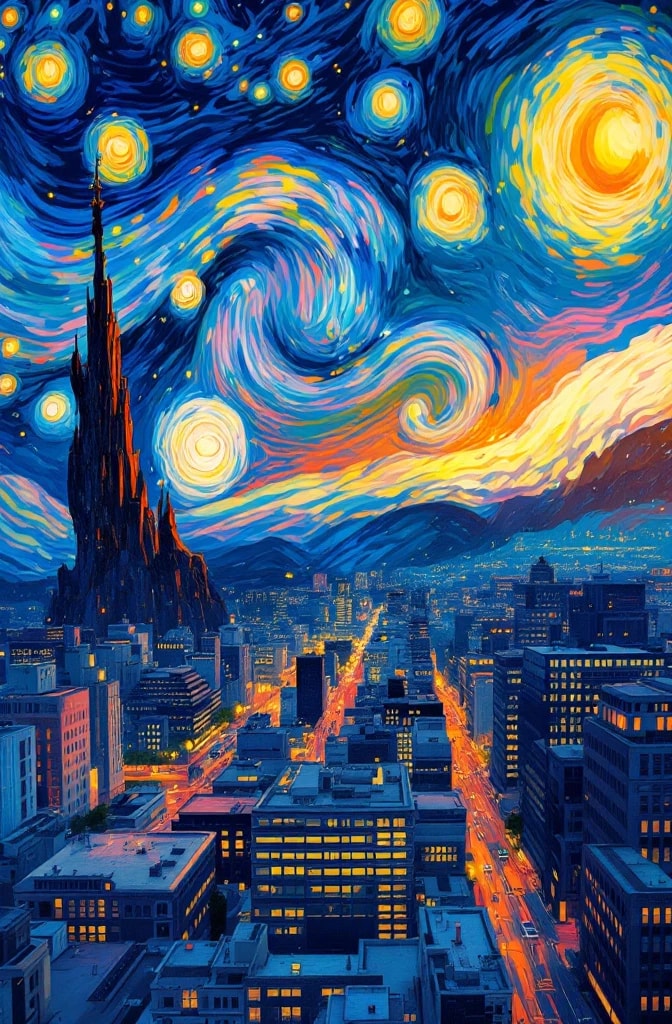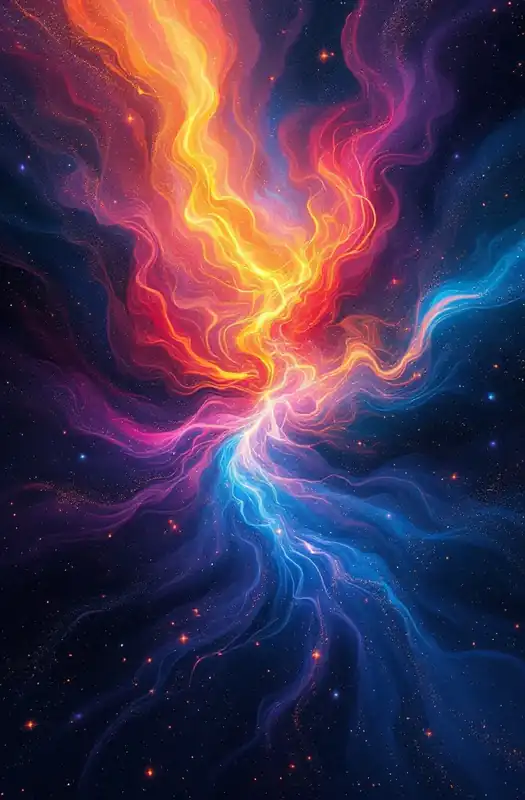
Style Transfer
Transforms the visual appearance of an image to match the texture, color palette, or aesthetic of another while preserving its semantic content and structure.
Style transfer is a subfield of ML (Machine Learning) within AI that frames aesthetic transformation as a learning- or optimization-based problem: style is modeled as statistical properties of feature activations and content as higher-level feature structure, and images are generated to reconcile the two via losses or learned mappings.
At an expert level, the canonical formulation represents style as correlations (Gram matrices) or other statistics of convolutional features from a pretrained network (typically VGG), and content as activations at deeper layers; the original neural approach optimizes pixel values to minimize a weighted sum of content and style reconstruction losses (Gatys et al., 2015). That optimization-based method established key concepts—perceptual losses, use of pretrained CNN feature spaces, and the interpretation of style as feature-statistic matching—that underpin subsequent advances: feedforward "fast" style networks trained with perceptual losses for real-time transfer (Johnson et al., Ulyanov et al.), multi-style and arbitrary-style frameworks (AdaIN by Huang & Belongie; WCT and other feature-transform methods), and adversarial or conditional generative models that integrate distribution-matching (GANs, pix2pix, CycleGAN) for more complex image-to-image translations. Extensions address semantic guidance (segmentation-aware transfer), temporal coherence for video, controllable stroke/scale, and cross-domain modalities (audio/textured synthesis). Theoretical links to texture synthesis, domain adaptation, optimal transport and disentangled representation learning clarify trade-offs between exact statistic matching and perceptual plausibility; practical challenges remain around semantic misalignment, artifact suppression, evaluation metrics, and computational cost.
First uses of style-like transfer trace to non-neural texture synthesis in the late 1990s–early 2000s (Efros & Leung 1999; Portilla & Simoncelli 2000), but the term in its current neural sense was popularized by Gatys, Ecker & Bethge in 2015; the concept then gained broad popularity from 2015–2017 as fast feedforward methods, arbitrary-style approaches, and GAN-based image translation work followed.
Key contributors include Leon A. Gatys, Alexander S. Ecker and Matthias Bethge (neural style transfer, 2015); Justin Johnson, Alexandre Alahi and Li Fei-Fei and Dmitry Ulyanov/Andrea Vedaldi/Victor Lempitsky (fast perceptual-loss based methods, 2016); Xun Huang & Serge Belongie (AdaIN, 2017); Yijun Li and collaborators (feature-transform/universal methods); and broader contributors whose work enabled the field—researchers of VGG feature representations (Simonyan & Zisserman), the GAN family (Goodfellow et al.), and image-to-image translation (Isola, Zhu, Zhu et al.)—as well as earlier texture-synthesis pioneers (Efros, Leung, Portilla, Simoncelli).
